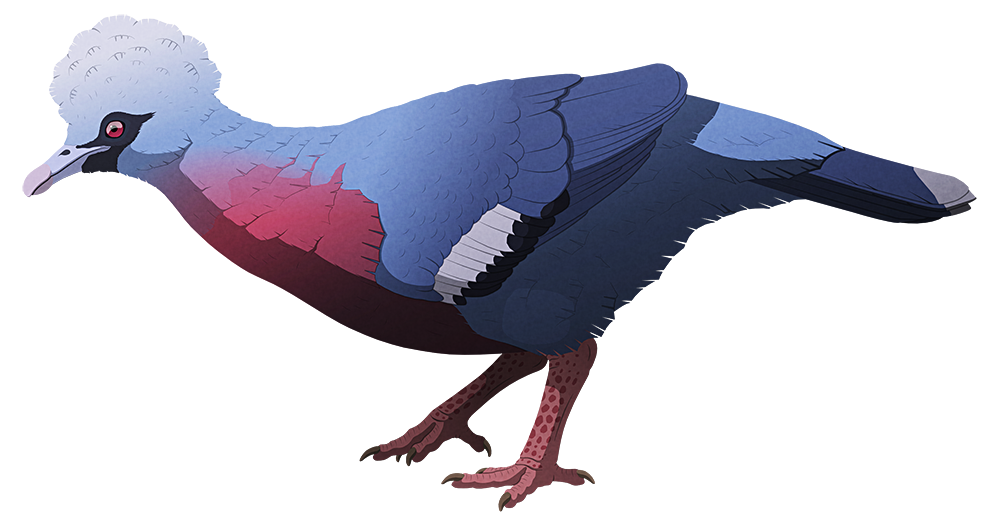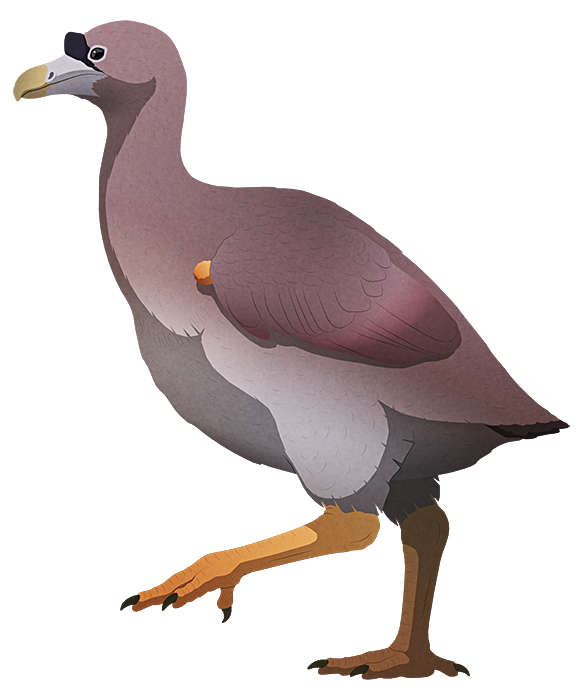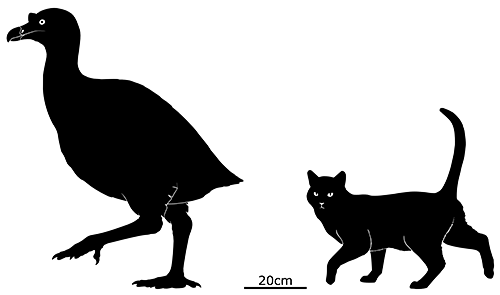The islands of Fiji are located in the South Pacific, a couple of thousand kilometers east of Australia and northeast of New Zealand. Formed via volcanic activity, the over 300 islands making up the archipelago had no native land mammals for most of their history, leading to birds, reptiles, and amphibians taking up the large animal niches in the ecosystem.
Subfossil remains of a unique mix of species have been found on Viti Levu, the largest of the Fijian islands — including a flightless megapode, a sylviornithid, a big frog, a giant iguana, a terrestrial crocodilian, and a meolaniid tortoise.
One of the most surprising discoveries, however, was actually a pigeon.
Natunaornis gigoura was by far the biggest pigeon known from any Pacific island, and one of the largest pigeons to ever live, being almost the same size as the Mauritian dodo at around 0.9m tall (3′). But unlike its distant cousin it still looked very much like a scaled-up normal pigeon, probably resembling a giant version of the closely related modern crowned pigeons.
It had reduced wings and strong legs, indicating it was flightless, and an unspecialized beak that suggests it was a generalist forager eating fallen fruit, seeds, and invertebrates from the forest floor.

Natunaornis existed well into the Holocene, but like many other island dwellers it was severely affected by the arrival of humans. Austronesian peoples reached Fiji somewhere between 3500 BCE and 1000 BCE, and it’s likely that a combination of hunting and predation from introduced mammals rapidly killed off the giant pigeons along with all the other large native species.





